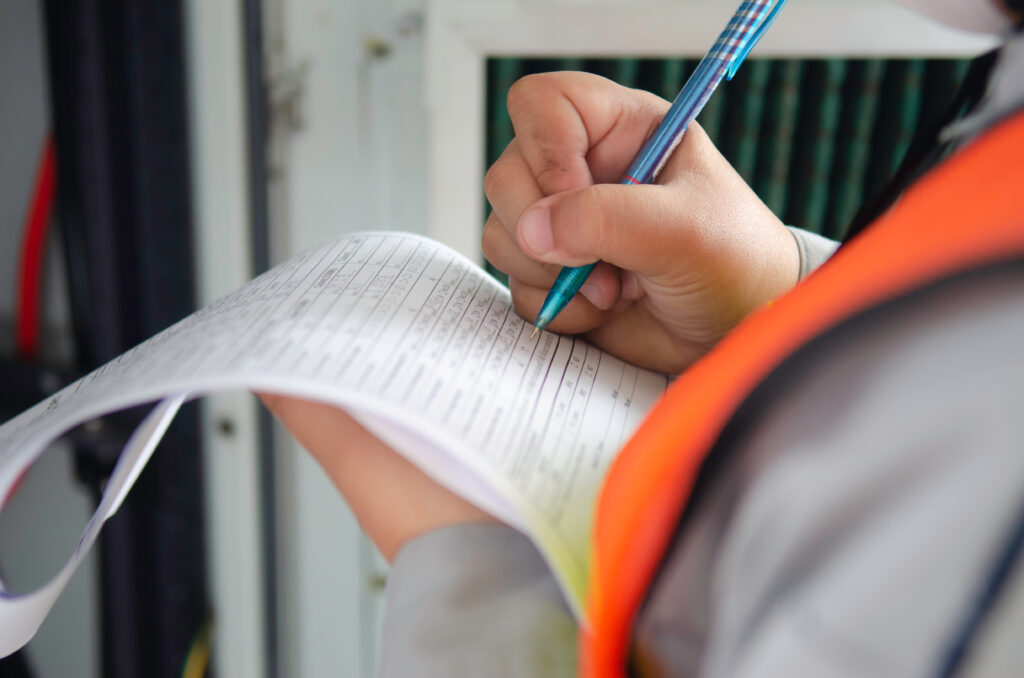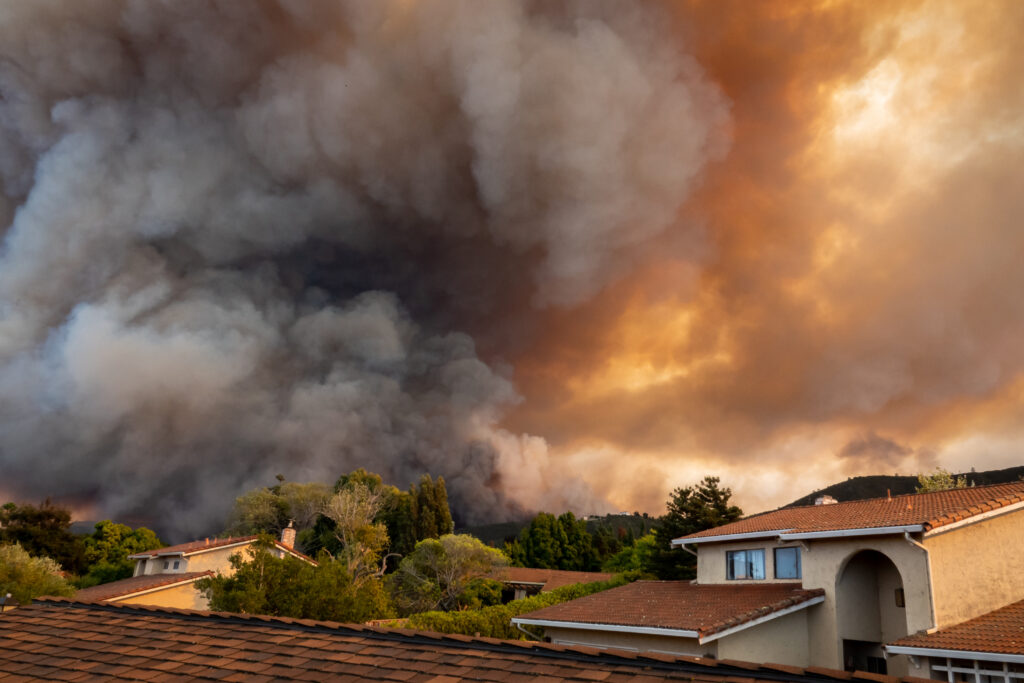California wildfires destroy homes, businesses, and lives every year. Firms and individuals can pursue legal action for their losses when these fires result from utility company negligence. If you're seeking accountability after a wildfire, an experienced California wildfire attorney can help you examine the utility’s maintenance records for evidence.
How Utility Company Maintenance Records Influence Wildfire Claims? This question is important to anyone seeking relief through wildfire claims. Maintenance records often hold the key to proving negligence and securing compensation.
Utility companies are responsible for keeping their equipment safe. Yet problems arise when they fail to maintain power lines, transformers, or other infrastructure. Sparks from neglected equipment can easily ignite wildfires in dry, windy conditions.
Maintenance records can show whether utility companies did enough to prevent fires.
Why Are Utility Maintenance Records Important?
Maintenance records provide a paper trail of a utility company's actions (or inactions). They include details about inspections, upgrades, repairs, and general upkeep.
For wildfire claims, these documents can answer questions like:

- Was the equipment regularly inspected?
- Were there known issues with the infrastructure?
- Were repairs delayed or ignored?
- Did the company meet California’s safety standards?
If records show a lack of maintenance or delayed repairs, it may support claims of negligence. For example, old power lines that sag and spark in high winds commonly cause California’s largest wildfires. Without proper maintenance, the risks increase, as do the chances of a company being held liable.
The Laws Governing Utility Companies in California
California laws require utility companies to maintain their equipment. The Public Utilities Code and the California Wildfire Safety Advisory Board set policy requirements to reduce wildfire risks.
These laws demand:
- Regular inspections of powerlines and other equipment.
- Removal of vegetation near electrical infrastructure.
- Safety upgrades in wildfire-prone areas.
- Emergency response plans for weather conditions likely to trigger wildfires.
One important regulation is “inverse condemnation.” This legal principle in California holds utilities liable for damages caused by their infrastructure, even if they follow safety rules. Courts expect utilities to anticipate and prevent disasters through preventive maintenance.
Wildfire Claims and Negligence
To file a wildfire claim, you need proof that the utility company's negligent actions or lack of action caused the blaze. Maintenance records are often at the center of this evidence.
They help answer questions such as:
- Were inspections conducted to assess wildfire risks?
- Did the company fix equipment that posed a hazard?
- Did training or procedural failures contribute to the fire?
For example, if records show powerlines hadn’t been inspected for years, despite increasing wildfire risks, this might support a claim.
The same applies if a company ignored warnings about faulty equipment.
How Do You Get Access to Maintenance Records?
Requesting maintenance records through the legal process is critical to building a strong case. Attorneys use tools like subpoenas during the discovery phase to obtain these records.
A utility company does not automatically hand over documents, so legal action is usually necessary.
The process can involve:
- Filing legal requests for records during a lawsuit.
- Collaborating with fire investigators who determine the cause of the wildfire.
- Reviewing public safety reports filed by utility companies with oversight agencies.
Maintenance records often include photos, inspection logs, internal communications, and repair schedules. This body of evidence can reveal neglect patterns contributing to wildfire outbreaks.
How Much Can You Recover in Damages?
Compensation types vary depending on the extent of damages caused by the wildfire. The most common recovery categories include:
- Property Damage: Costs to repair or replace homes, structures, and personal belongings destroyed by the fire.
- Loss of Business Income: Recovery for profits lost when businesses close or operate at reduced capacity due to fire damage.
- Medical Costs: Compensation for injuries or physical harm caused by the fire.
- Punitive Damages: Awards meant to punish utility companies for extreme negligence or reckless conduct.
For instance, if records show systematic delays in repairing an aging powerline, punitive damages could come into play. California law permits these damages when evidence shows companies put profits over safety.
Steps to Take in the Days and Weeks After a Fire
If your home or business has been affected by a wildfire potentially caused by utility company negligence, consider these steps in the coming days and weeks:

- Document the Damage: Take photos of destroyed property, scorched land, or any other damages. Keep records of the costs for temporary accommodations and lost items.
- Preserve Evidence: Keep charred items, insurance reports, and official notices. Do not discard anything that might help your case.
- Contact Fire Investigators: Ask local officials or fire investigators about the suspected origin and cause of the wildfire.
- File an Insurance Claim: Report your losses promptly. While this may not cover everything, it is a step toward documenting the full extent of damages.
- Save News Articles or Public Statements: Collect coverage related to the fire, especially if it provides clues about utility involvement. Official reports or announcements noting the cause of the fire may prove valuable.
- Reach Out to a Lawyer Experienced in Wildfire Cases: Starting the legal process quickly ensures you meet the applicable statute of limitations. Lawyers can gather evidence and begin filing claims on your behalf.
Electric Companies and Their Wildfire Funds
Some California utility companies maintain wildfire funds to pay claims. These funds exist because wildfires caused by utilities often lead to massive financial losses for residents. For example:
- Pacific Gas & Electric (PG&E) has settled billions of dollars in claims using their wildfire fund after major fires, like the Camp Fire in 2018, devastated communities.
- Southern California Edison also maintains funds for claims resulting from wildfires linked to their equipment.
While these funds may seem like an easy way to recover, the process is complex. Utility companies often require claimants to prove losses, a time-consuming step fraught with delays. Legal help ensures the process moves faster and avoids pitfalls like underpayment or claim rejection.
The Consequences of Poor Utility Maintenance
Neglected maintenance often results in catastrophic consequences:
- 2018 Camp Fire: PG&E’s outdated powerlines sparked this blaze, destroying Paradise, California. It remains the state’s deadliest fire, with 85 lives lost.
- 2017 Thomas Fire: Southern California Edison equipment sparked this fire, burning nearly 300,000 acres.
- 2021 Dixie Fire: PG&E again saw scrutiny for its role. Maintenance records revealed postponed upgrades and repairs near the ignition site.
These fires highlight how lapses in maintenance create massive harm and legal accountability for utility companies.
Why Is Timing Important?
California’s statute of limitations means wildfire claims must be filed within specific timeframes. For property damage, you generally have three years after discovering the loss.
Missing this deadline could mean walking away from compensation owed to you. Starting the process of investigating utility maintenance records as soon as possible helps build a stronger case.
Advantages of Legal Representation for Wildfire Claims

Documenting damages, obtaining maintenance records, and pursuing claims is not easy alone. Legal professionals are well-equipped to untangle complicated corporate records, fire investigations, and utility company defenses.
They work to maximize recoveries by highlighting patterns of corporate failure and connecting those failures to individuals' personal losses. Even with clear evidence of negligence, utility companies rarely acknowledge responsibility outright.
They invest heavily in denying liability. Strong legal representation ensures those responsible for wildfires are held accountable.
How Utility Companies Handle Vegetation Clearance in High-Risk Zones Over Time
Vegetation management is one of the most essential strategies for reducing wildfire risks near utility infrastructure. Utility companies are responsible for clearing trees, bushes, and other vegetation around powerlines and electrical equipment to prevent them from sparking fires.
However, records often reveal that vegetation management has not received consistent attention, especially in high-risk wildfire zones. When utility companies fail to prioritize this critical preventative measure, the results can be catastrophic.
The Importance of Vegetation Clearance in Wildfire Prevention
Wildfire experts and regulators consistently emphasize maintaining defensible space around powerlines. Overgrown trees and vegetation brushing up against powerlines can easily ignite during dry or windy conditions.
California law recognizes this eminent risk and requires utility companies to adhere to strict vegetation management standards, particularly in regions classified as high fire-threat areas.
If inspections and clearance aren’t performed regularly, the risks increase exponentially. A single neglected tree limb can spark a fire that destroys entire communities, making thorough vegetation management a safety measure and a legal obligation for utility companies.
Identifying Long-Term Neglect in Vegetation Management Records
Examining a utility company’s years of vegetation management records can reveal patterns of systemic neglect. Records might indicate how often inspections were conducted, the cleared geographic areas, and whether any issues were flagged during these inspections.
If certain high-risk zones received minimal or inconsistent attention over time, legal claims can use this information to argue the utility company failed to meet its duty of care.
For instance, records may show that utility crews identified overgrown vegetation near powerlines in a rural area but deferred clearance multiple times. Even if the company performed some clearing, gaps in coverage or delays in addressing problem areas can highlight their negligence.
How Prioritization Decisions Increase Risks
Utility companies often prioritize regions for vegetation clearance based on population density or economic considerations. Records may reveal that urban areas received regular vegetation management while rural or low-income communities were ignored.
These practices leave wildfire-prone zones especially vulnerable and reveal a pattern of decisions that prioritize cost savings over human lives and safety.
Additionally, budget constraints often lead companies to reduce the frequency of inspections or hire contractors who don’t have the resources or training to address the risks fully. These choices, whether deliberate or inadvertent, create compounding threats over time.
Consequences of deferred action after regulatory warnings
Regulators like the California Public Utilities Commission or Cal Fire frequently warn utility companies about failing vegetation management efforts in specific areas. Historical records showing that a company ignored or inadequately responded to these warnings can become critical evidence in legal claims.
For instance, if a company was notified that vegetation near a transmission line was dangerously overgrown but took years to address the warning, this demonstrates negligence.
Lawsuits related to wildfires often unearth records where red flags were raised repeatedly, yet action was deferred or dismissed. These delays create an undeniable link between lax vegetation management practices and the fire’s origin.
Building a Legal Case with Vegetation Management Failures
Vegetation management failures provide direct evidence of utility company negligence for individuals affected by wildfires. When lawyers analyze these records, they focus not just on what measures were or were not taken but also on whether those measures align with legal obligations.
A history of overlooked warnings, slow responses, or inconsistent attention to high-risk zones can strengthen a claim and argue for higher compensation.
Ultimately, pointing to neglected vegetation management allows victims of wildfires to hold utility companies accountable for creating conditions where fires could have been avoided. It also underscores the importance of requiring these companies to adopt stricter, more proactive safety measures.
Bernheim Law Can Help

Maintenance records often answer questions about how a wildfire could have been prevented. They document what utility companies did or failed to do before catastrophe struck.
If records show they skipped inspections or postponed repairs, liability becomes clearer. California laws support claims against negligent utility companies, especially when their equipment causes preventable fires.
Legal recourse is one way to rebuild and seek justice for those facing unimaginable losses from wildfires. Bernheim Law Firm has experience with wildfire litigation cases and can help you better understand your rights. Call (800) WILDFIRE to discuss your claim today.